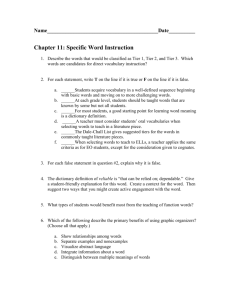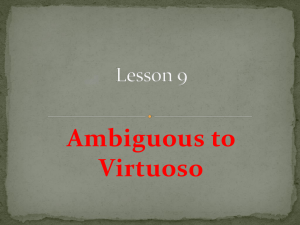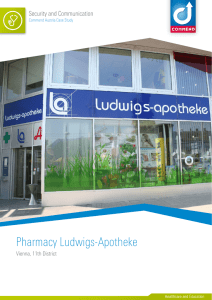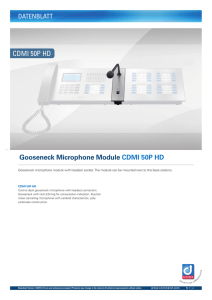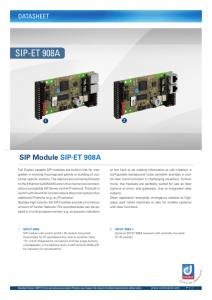Vocabulary: What You Should Know…
advertisement
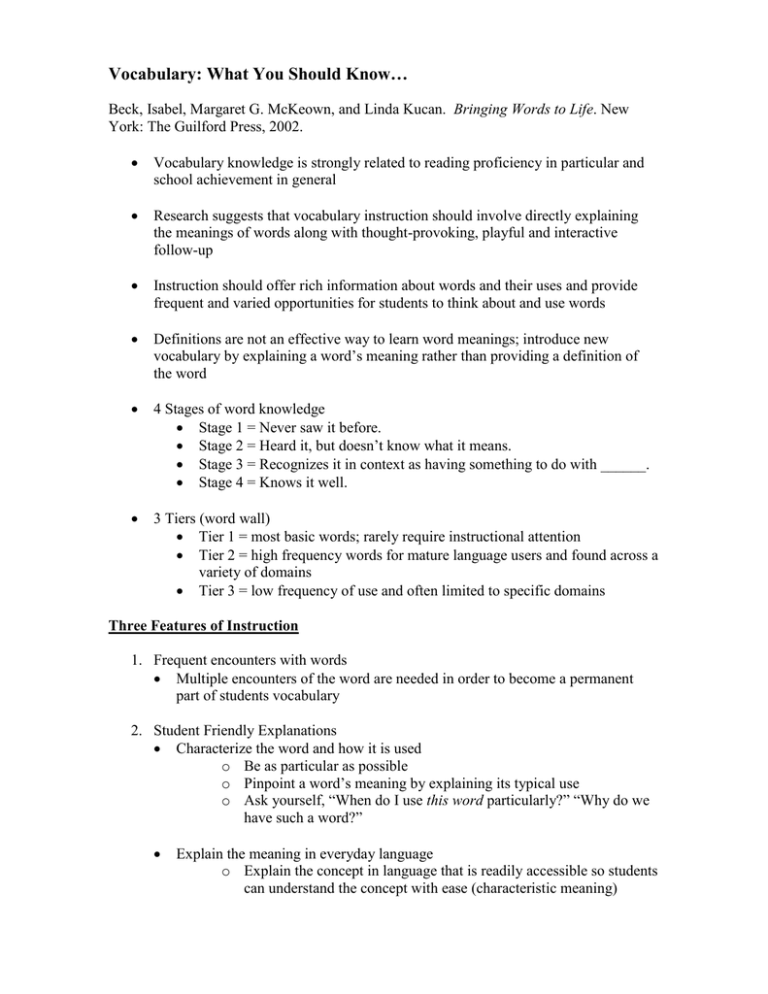
Vocabulary: What You Should Know… Beck, Isabel, Margaret G. McKeown, and Linda Kucan. Bringing Words to Life. New York: The Guilford Press, 2002. Vocabulary knowledge is strongly related to reading proficiency in particular and school achievement in general Research suggests that vocabulary instruction should involve directly explaining the meanings of words along with thought-provoking, playful and interactive follow-up Instruction should offer rich information about words and their uses and provide frequent and varied opportunities for students to think about and use words Definitions are not an effective way to learn word meanings; introduce new vocabulary by explaining a word’s meaning rather than providing a definition of the word 4 Stages of word knowledge Stage 1 = Never saw it before. Stage 2 = Heard it, but doesn’t know what it means. Stage 3 = Recognizes it in context as having something to do with ______. Stage 4 = Knows it well. 3 Tiers (word wall) Tier 1 = most basic words; rarely require instructional attention Tier 2 = high frequency words for mature language users and found across a variety of domains Tier 3 = low frequency of use and often limited to specific domains Three Features of Instruction 1. Frequent encounters with words Multiple encounters of the word are needed in order to become a permanent part of students vocabulary 2. Student Friendly Explanations Characterize the word and how it is used o Be as particular as possible o Pinpoint a word’s meaning by explaining its typical use o Ask yourself, “When do I use this word particularly?” “Why do we have such a word?” Explain the meaning in everyday language o Explain the concept in language that is readily accessible so students can understand the concept with ease (characteristic meaning) Include words such as something, someone, or describes because they anchor the meaning for students so they can get an idea of how to use the word o Ex. Ally Dictionary definition = one associated with another Student friendly explanation = someone who helps you in what you are trying to do, especially when there are other people against you 3. Engage students after presenting explanations Word Associations o Associate the new word with a word that is already familiar; be sure to have students explain their reasoning o Ex. if the new vocabulary words are virtuoso and philanthropist, ask students, “Which word goes with a gift to build a new hospital?” or “which word goes with piano?” Have You Ever… o Helps students associate newly learned words with activities from their own experience o Ex. if the new vocabulary words are commend and banter, ask students to “Describe a time when you might banter with someone, commend someone.” Idea Completions o Sentence stems require students to integrate a word’s meaning into a context in order to explain a situation Ex. The audience asked the virtuoso to play another piece of music because… The skiing teacher said Maria was a novice on the slopes because… o When might you… o How might you… o Why might you… Context Interpretation o Students respond to questions about sentences containing target words and requires them to apply the word’s meaning to understand the context of its use Ex. Mr. Robinson, the high school principal, was in a very good mood after his meeting with the philanthropist. Why do you think Mr. Robinson was happy?



